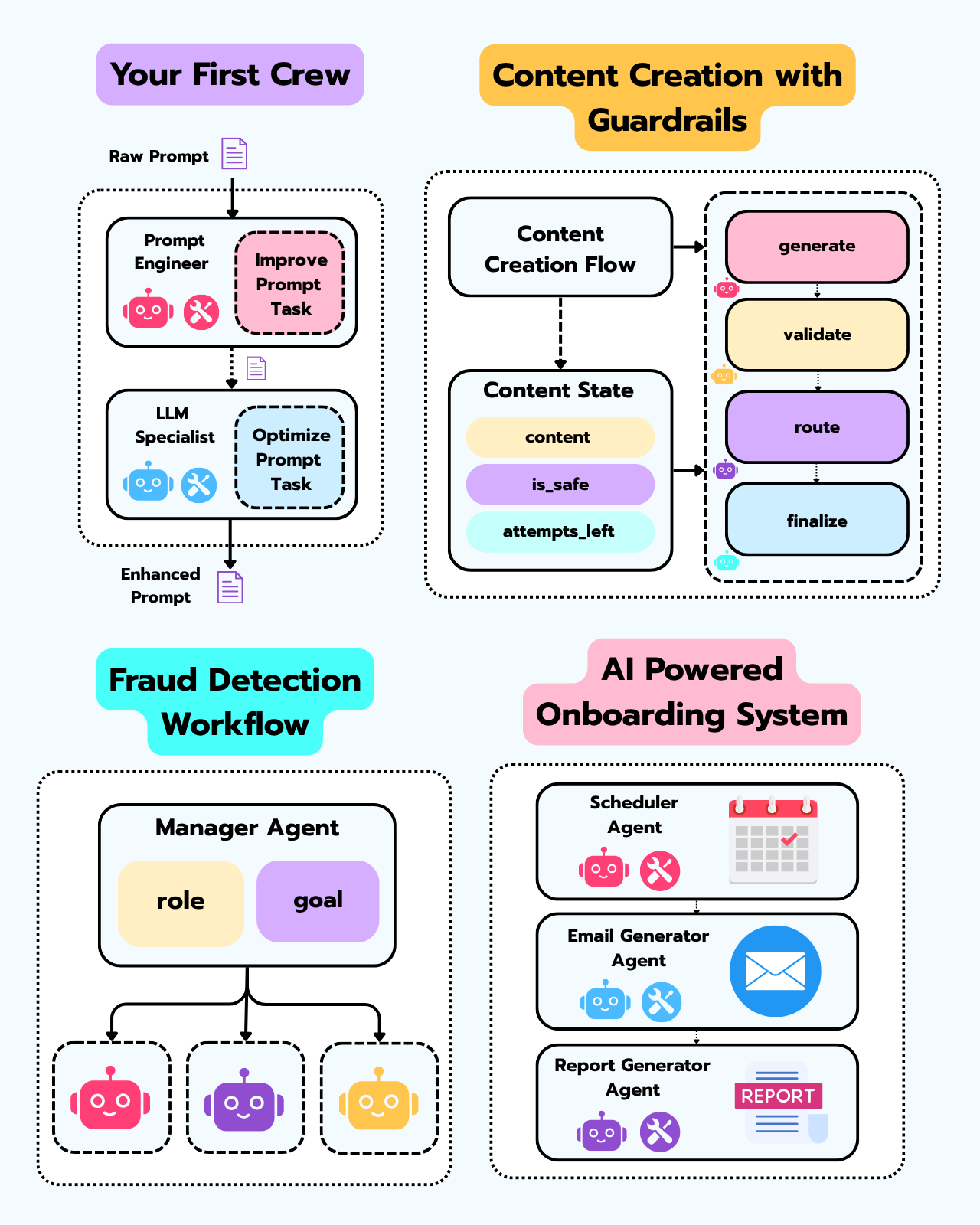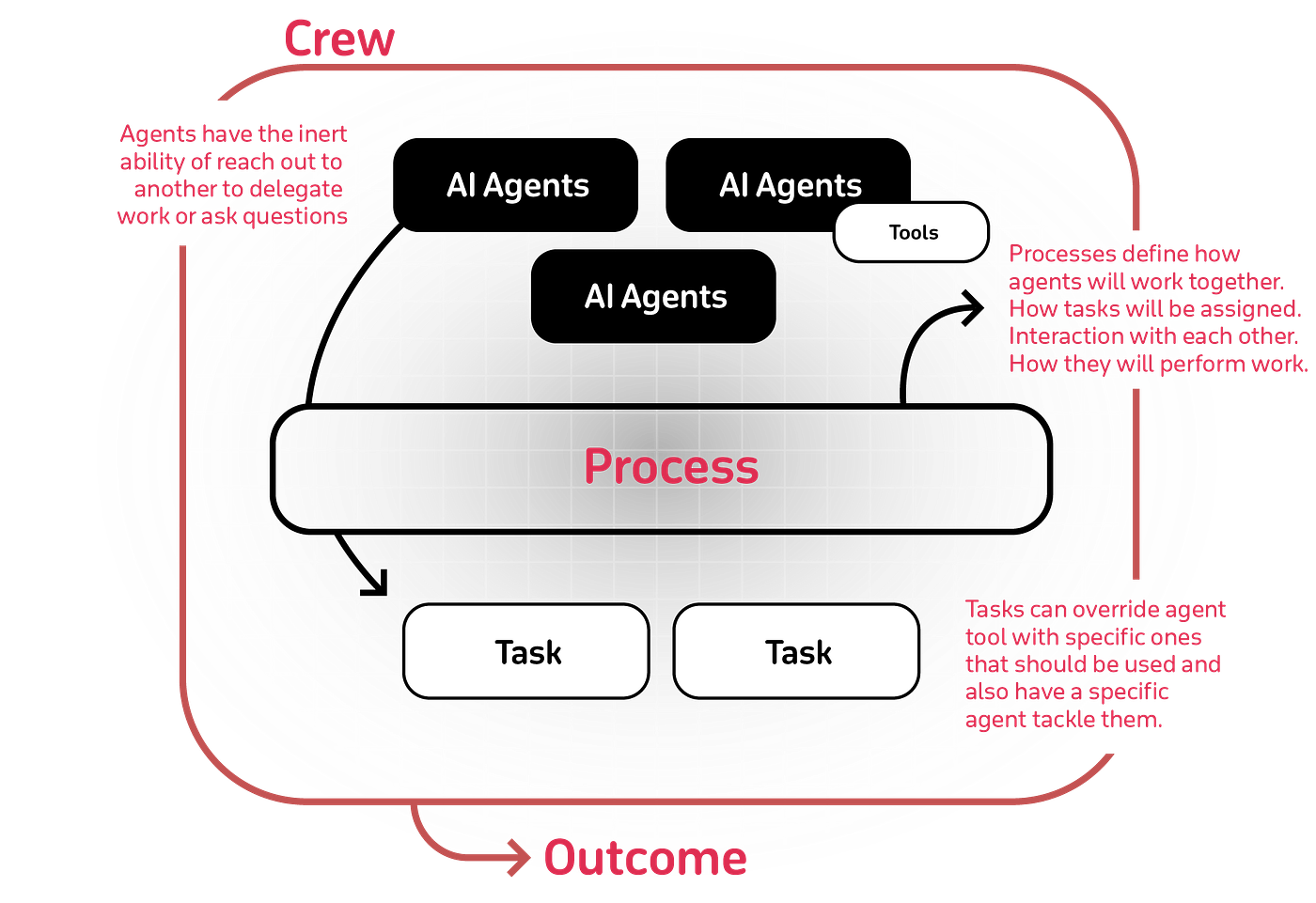Get ready to go from the fundamentals all the way to the most complex multi-agent topics, all delivered with
’s trademark mix of insight and irresistible Italian charm.Without further ado, I’ll hand it over to the maestro himself.
Enjoy!
Miguel
Imagine asking an AI to “write a story about a robot” and watching two specialized agents collaborate: one restructures your prompt for clarity, another optimizes it for your chosen AI model.
The first agent turns your vague request into a detailed, structured prompt; the second fine-tunes it for GPT-4, Claude, or any other model.
This isn’t science fiction — it’s what you’ll build in the first assignment of our CrewAI Workshop.
Most AI applications use a single-agent setup (you ask, AI responds). But real power emerges when multiple agents work together, each bringing specialized expertise.
It’s like assembling a team of experts rather than asking one generalist to do everything.
How to use this Workshop?
This workshop is structured around three main components:
Slides – the ones I’ll be using throughout the video lessons.
Website – the core platform that gives you access to all workshop materials.
GitHub Repository – containing the website’s source code and complete solutions for every exercise.
Before you begin, make sure you can access all three components.
From Static Prompts to Dynamic Systems
AI is entering a new era. One where systems no longer just respond to instructions but act, adapt, and collaborate.
Traditional prompt-based workflows are static, which means that you give a command, the model replies, and the interaction ends. But real-world tasks are rarely that simple. They require reasoning, context, and the ability to make decisions across multiple steps.
That’s where agents come in. Agents function as dynamic systems—they perceive changes in their environment, plan actions, and use large language models (LLMs) as reasoning cores to make context-aware decisions in real time.
Unlike prompts, agents can handle complex workflows, branching logic, and dependencies without collapsing under ambiguity.
So, why is this happening now?
The answer lies in the evolution of LLMs. For the first time, we have models capable of understanding context, reasoning flexibly, and interacting naturally with both humans and digital systems. These capabilities have transformed agents from rule-based automatons into intelligent collaborators capable of operating in open-ended, unpredictable environments.
In short, we’re moving from prompting models to orchestrating systems of intelligence—a shift that’s redefining how we build, interact with, and benefit from AI.
Understanding CrewAI architecture
CrewAI is a powerful framework for creating AI agents that can reason, collaborate, and act autonomously—so you can focus on results, not infrastructure.
It takes care of the reasoning and orchestration layer, enabling you to design complex, multi-agent systems without reinventing the wheel. Under the hood, CrewAI runs on agentic AI principles, giving each agent the ability to plan, communicate, and make decisions intelligently.
CrewAI is also LLM-agnostic, allowing you to use any large language model as the brain behind your agents. Whether you’re automating workflows, coordinating teams of digital specialists, or exploring adaptive AI systems, CrewAI lets you concentrate on solving problems, not on building the underlying agent infrastructure.
What you see up there is the CrewAI Architecture.
This framework can be broken down into several key components (Agents, Tools, Tasks, Crews, etc.) each playing a specific role in how the system operates.
It might look a little complex at first, but in the next video, I’ll break down each component and concept you’ll need to successfully complete this workshop.
Keep reading with a 7-day free trial
Subscribe to The Neural Maze to keep reading this post and get 7 days of free access to the full post archives.





